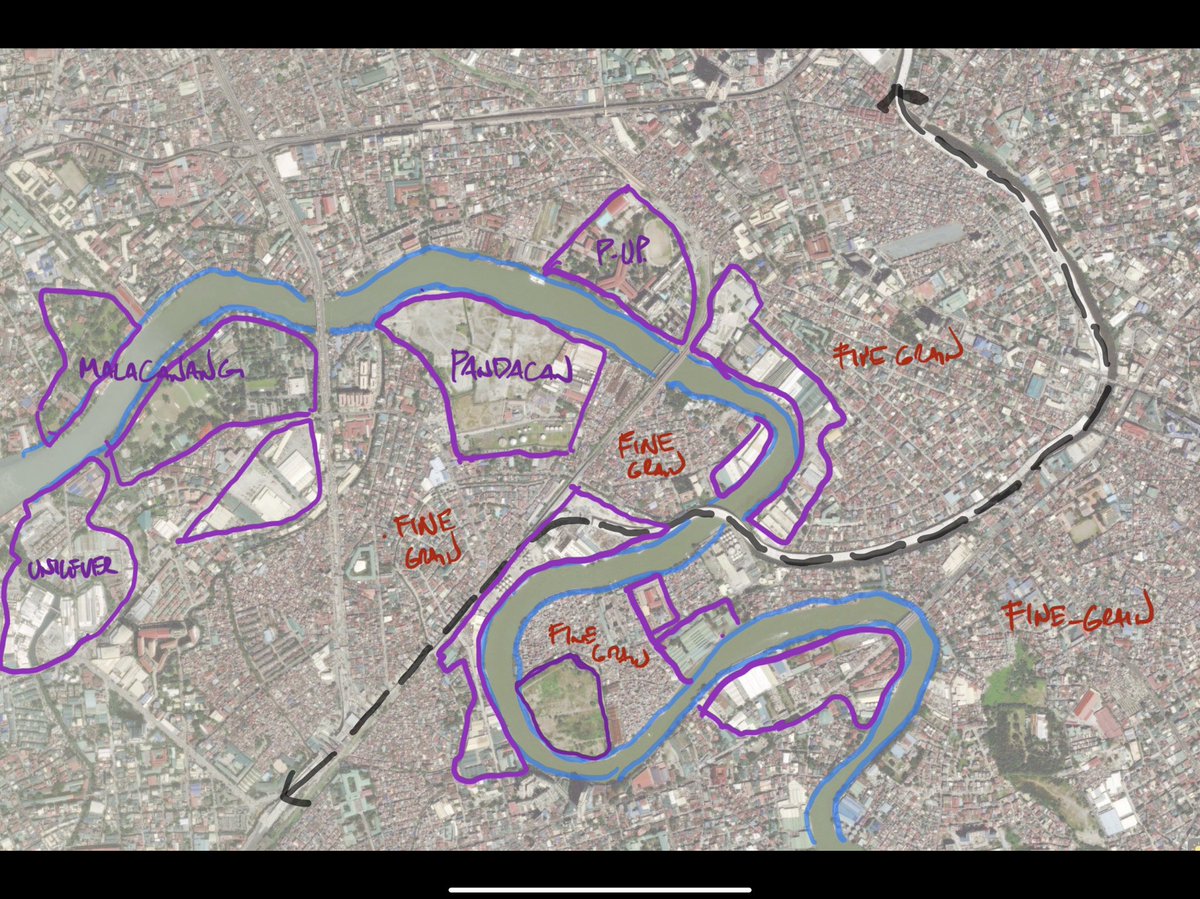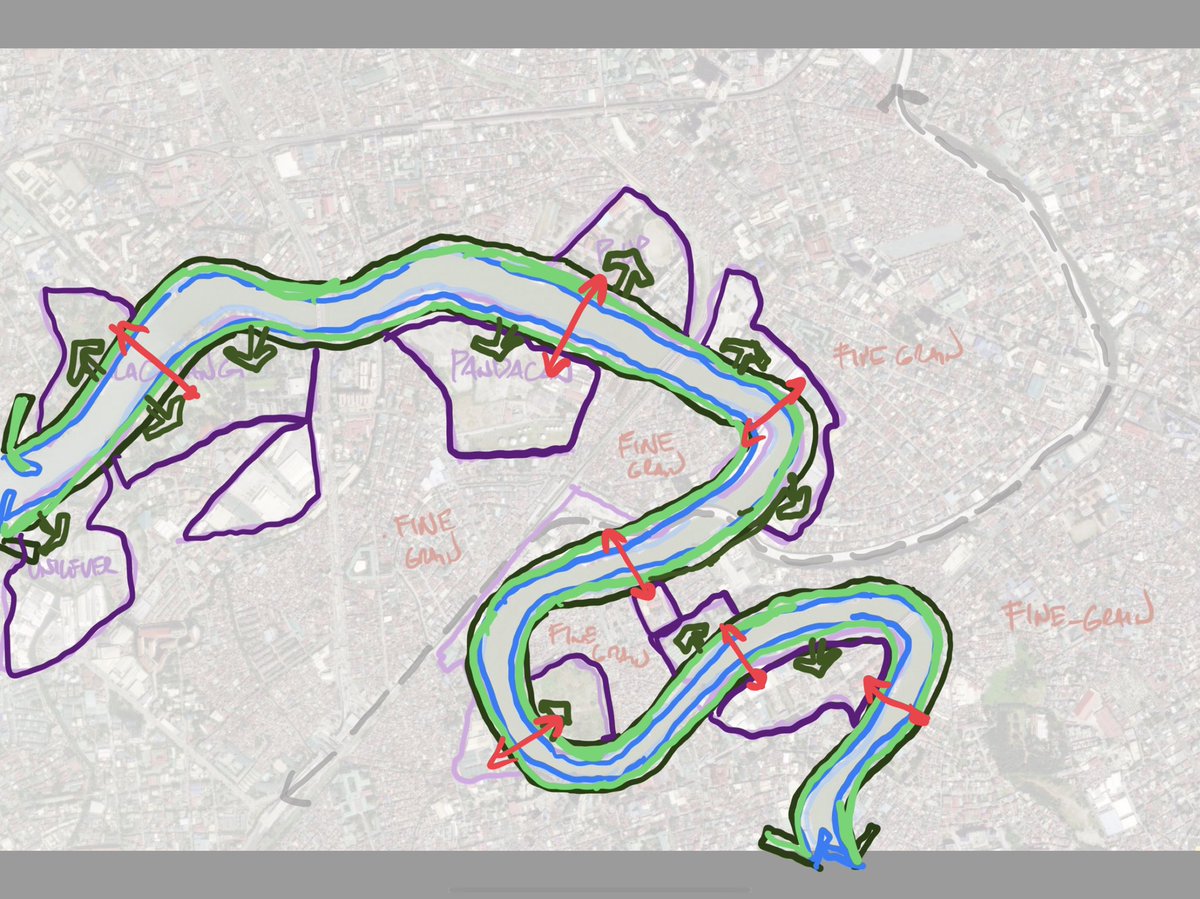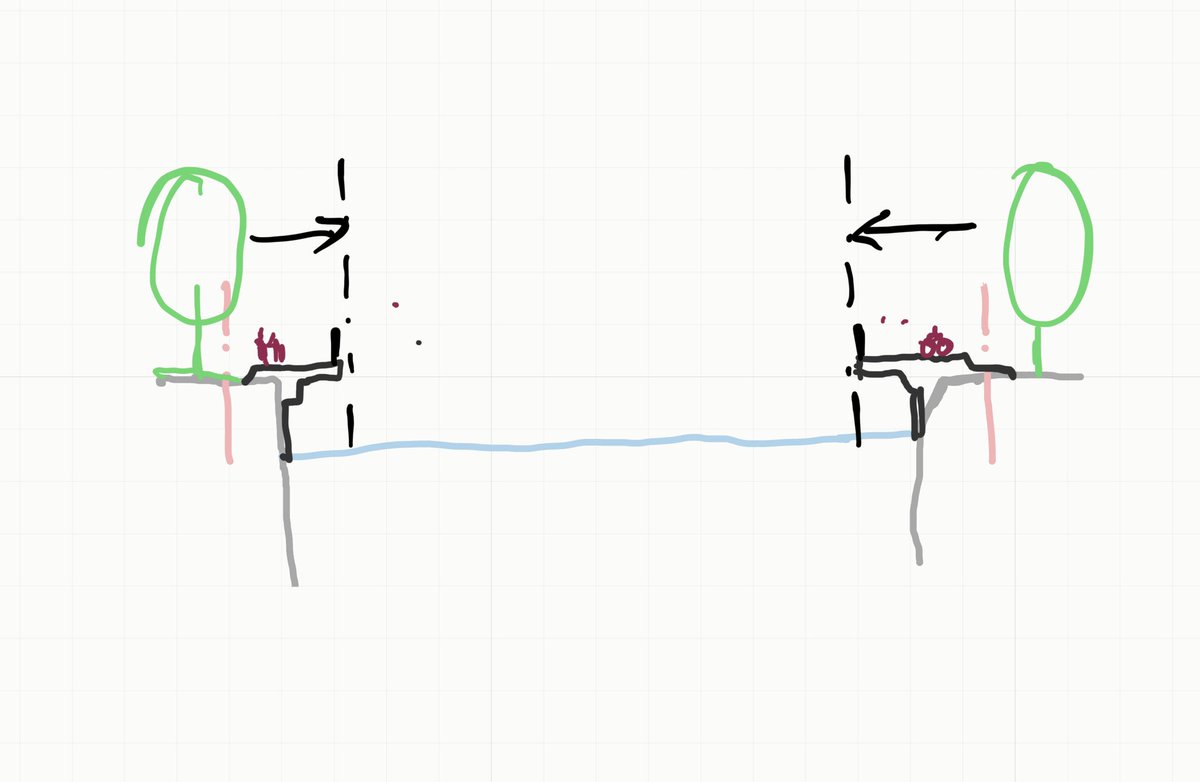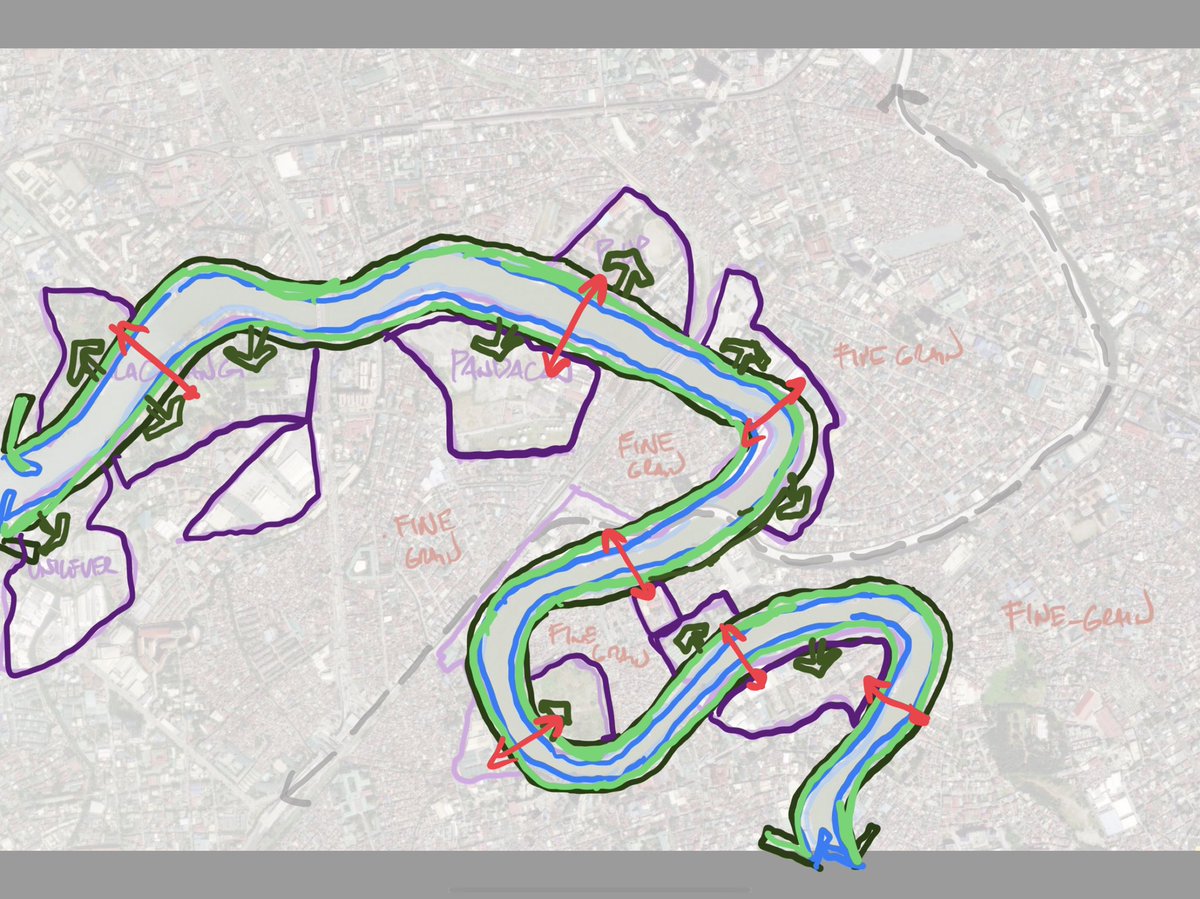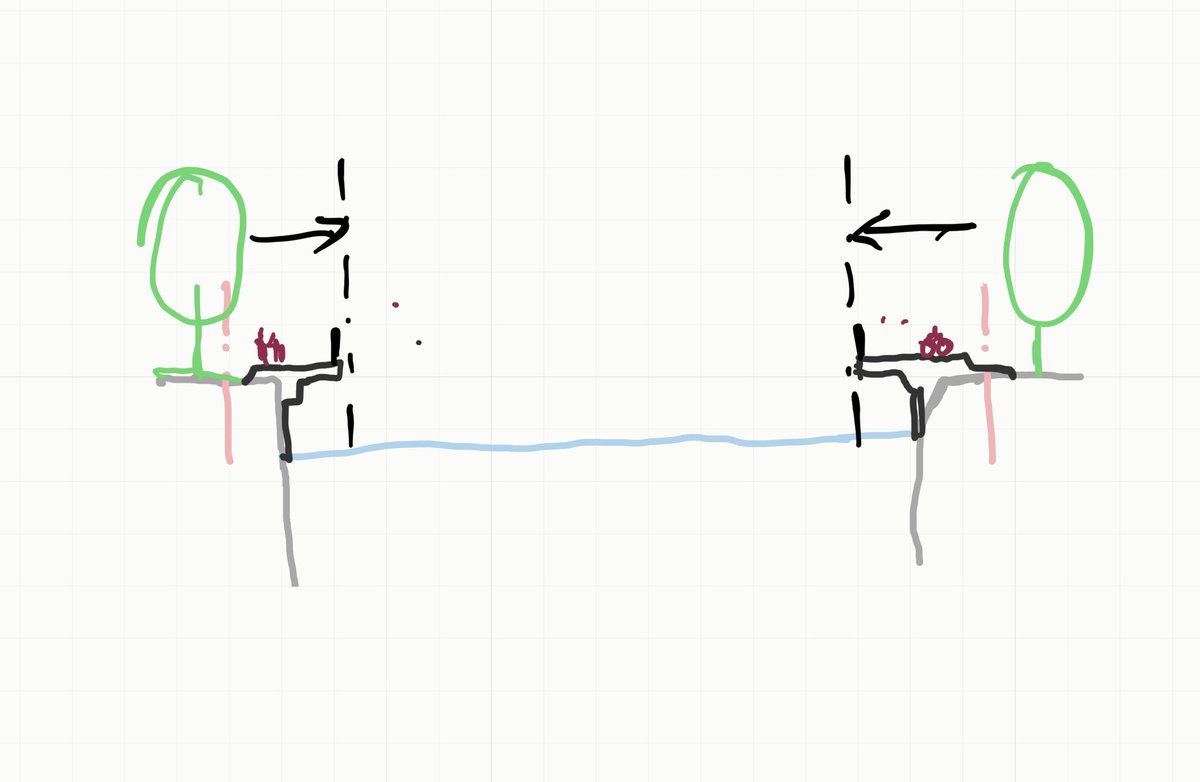Expounding on the macro analysis of the Pasig River banks. Burnham& #39;s original plan was for riverside promenades and streets to activate its edges. These were sacrificed to make way for the industrial uses that relied on the river for access and discharge.
One can see how these large-grained, leftover industrial parcels are now hemmed in by the dense, fine-grained and informal fabric that has evolved over time.
One reason why the PAREX is a tempting solution, is described by & #39;Implant-bypass urbanism& #39; (Corpuz, 2000; Shatkin, 2008). By providing an expressway on the river, it allows these hemmed-in parcels to bypass their surrounding fabric, and allows high-end development to implant.
Instead of & #39;bypass-implant& #39; urbanism which relies on exclusion and prioritization of space for the perceived & #39;higher-end& #39; market, we can alternatively propose an urbanism that implants new connections that expand the narrow public realm of the river banks.
By strategically expanding the river banks (through cantilevered projections) and using these as new cycleways, walkways and parkways, we implant new, fine-grained connectivity that helps suits the scale of the urban context, and connects these parcels to their surroundings.

 Read on Twitter
Read on Twitter